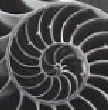
Problems for
Intermediate Methods in Theoretical Physics
Edward F. Redish
 |
Problems for Edward F. Redish |
where a and b are arbitrary complex numbers. We can associate this function with a vector

and we proved that this set of functions forms a linear space.
(a) From the usual definition of inner product in our vector space describing the motion of a single particle in one dimension, we might come up with one or more definitions of an inner product in this space. Construct one and show that it doesn't work -- that it doesn't give an inner product according to the definition given in class on Monday. Discuss why this is the case.
(b) Show that the definition

satisfies the conditions for an inner product.
(c) What is the dimension, n, of the inner product space constructed in parts (a) and (c)? Construct a set of n orthonormal vectors in this space that can serve as a basis.
Solution
(a) We might be tempted to just multiply the functions as our inner product since a function is just a number so it superficially looks like a 1-D space. For two vectors in 1-D we could just multiply them. But here, if we multiply

We don't in general get a number but a function. And it isn't even a function in our space, not having the right form! So just multiplying functions here isn't allowed. (We'll figure out what that means later.)
(b) The inner product defined here comes from thinking of our function not just as a number, but as an infinite set of numbers -- one for each given value of x. This is more like a many-dimensioned vector space. What we did in that case to take the inner product was to multiply together the two values that had the same index and add them together -- like this

So with our f and g we multiply together the corresponding values for a given index label (here x) -- getting f*(x) g(x) -- and add them all up. Here, since x is continuous, that means integrate. Let's see if this satisfies the conditions for an inner product.
To normalize them, we have to construct the integrals


To see that they are orthogonal we just have to work out the overlap integral.

So they are orthogonal as well as normalized.
| University of Maryland | Physics Department | Physics 374 Home |
|---|---|---|
 |
 |
 |
Last revision 8. November, 2005.